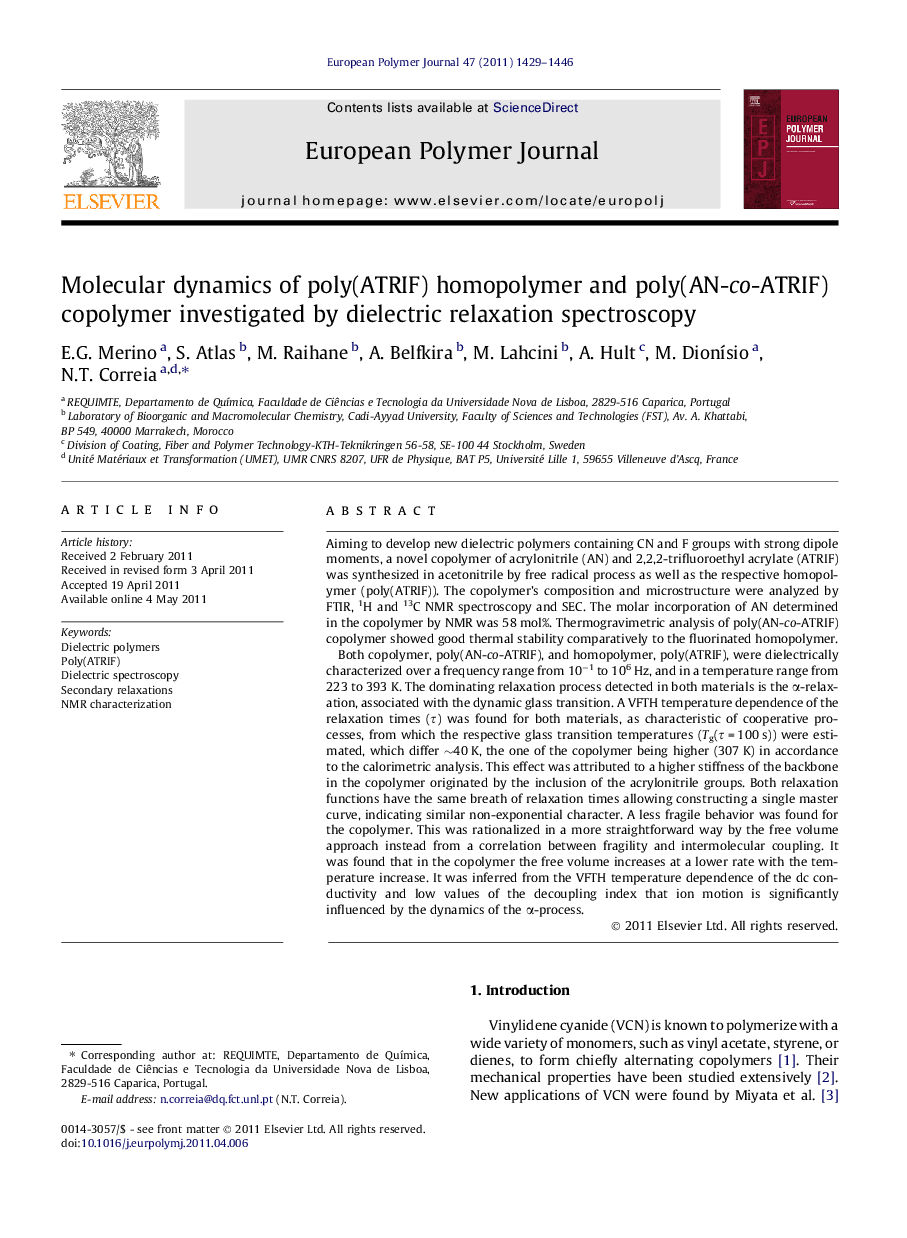| Article ID | Journal | Published Year | Pages | File Type |
|---|---|---|---|---|
| 1399901 | European Polymer Journal | 2011 | 18 Pages |
Aiming to develop new dielectric polymers containing CN and F groups with strong dipole moments, a novel copolymer of acrylonitrile (AN) and 2,2,2-trifluoroethyl acrylate (ATRIF) was synthesized in acetonitrile by free radical process as well as the respective homopolymer (poly(ATRIF)). The copolymer’s composition and microstructure were analyzed by FTIR, 1H and 13C NMR spectroscopy and SEC. The molar incorporation of AN determined in the copolymer by NMR was 58 mol%. Thermogravimetric analysis of poly(AN-co-ATRIF) copolymer showed good thermal stability comparatively to the fluorinated homopolymer.Both copolymer, poly(AN-co-ATRIF), and homopolymer, poly(ATRIF), were dielectrically characterized over a frequency range from 10−1 to 106 Hz, and in a temperature range from 223 to 393 K. The dominating relaxation process detected in both materials is the α-relaxation, associated with the dynamic glass transition. A VFTH temperature dependence of the relaxation times (τ) was found for both materials, as characteristic of cooperative processes, from which the respective glass transition temperatures (Tg(τ = 100 s)) were estimated, which differ ∼40 K, the one of the copolymer being higher (307 K) in accordance to the calorimetric analysis. This effect was attributed to a higher stiffness of the backbone in the copolymer originated by the inclusion of the acrylonitrile groups. Both relaxation functions have the same breath of relaxation times allowing constructing a single master curve, indicating similar non-exponential character. A less fragile behavior was found for the copolymer. This was rationalized in a more straightforward way by the free volume approach instead from a correlation between fragility and intermolecular coupling. It was found that in the copolymer the free volume increases at a lower rate with the temperature increase. It was inferred from the VFTH temperature dependence of the dc conductivity and low values of the decoupling index that ion motion is significantly influenced by the dynamics of the α-process.
Graphical abstractFigure optionsDownload full-size imageDownload as PowerPoint slide
